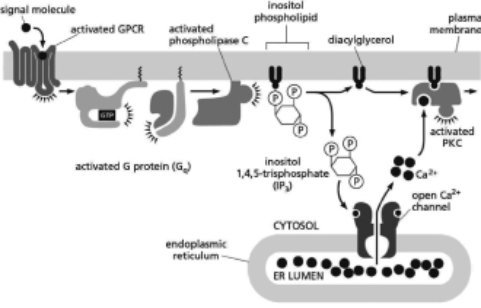Question 5
(Multiple Choice)
Activated protein kinase C (PKC) can lead to the modification of the membrane lipids in the vicinity of the active PKC.Figure 16-17 shows how G proteins can indirectly activate PKC.You have discovered the enzyme activated by PKC that mediates the lipid modification.You call the enzyme Rafty and demonstrate that activated PKC directly phosphorylates Rafty, activating it to modify the plasma membrane lipids in the vicinity of the cell where PKC is active; these lipid modifications can be detected by dyes that bind to the modified lipids.Cells lacking Rafty do not have these modifications, even when PKC is active.Which of the following conditions would lead to signal-independent modification of the membrane lipids by Rafty?  Figure 16-17
Figure 16-17
A)the expression of a constitutively active phospholipase C
B)a mutation in the GPCR that binds the signal more tightly
C)a Ca2+ channel in the endoplasmic reticulum with an increased affinity for IP3
D)a mutation in the gene that encodes Rafty such that the enzyme can no longer be phosphorylated by PKC
Answer